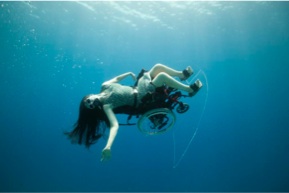Embodiment and Its Varieties

Part of our series featuring Townsend Working Groups, this post by Kate Mattingly, co-coordinator of the Dance Studies working group, discusses the innovative analytical approaches of Dance Studies.
When someone asks what I research, my answer is “dance studies.” Since this is usually met with a quizzical look, my next step is to explain how there is more to dance education than trained, choreographed bodies, or histories of people and performances.
Last September our meeting's topic was "screendance" and relationships between dance, technology, and phenomenology. Screendance is a burgeoning interdisciplinary field, expanded by access to YouTube and vimeo, as well as by growing national and international festivals, by an academic journal that began in 2010 called “The International Journal of Screendance,” and a recent book by Douglas Rosenberg called “Screendance: Inscribing the Ephemeral Image” published by Oxford University Press. What does watching dance on a screen do to our reception of the work? How do technologies of framing and editing collaborate with choreography and influence how we receive images? Our discussion was inspired by examples of screendance provided by Charlotte Shoemaker who curated “Dance/Screen,” an annual international dance film program in San Francisco, and an article by Vivian Sobchack that argues against film as a solely visual experience and calls for an embodied or phenomenological approach to analysis.
For the Dance Studies Working Group’s blog, please visit http://dancestudiesworkinggroup.blogspot.com/
Image Credits:
Black and white photograph of Catherine Long by Timothy Fadek
Image of Sue Austin from her web site
